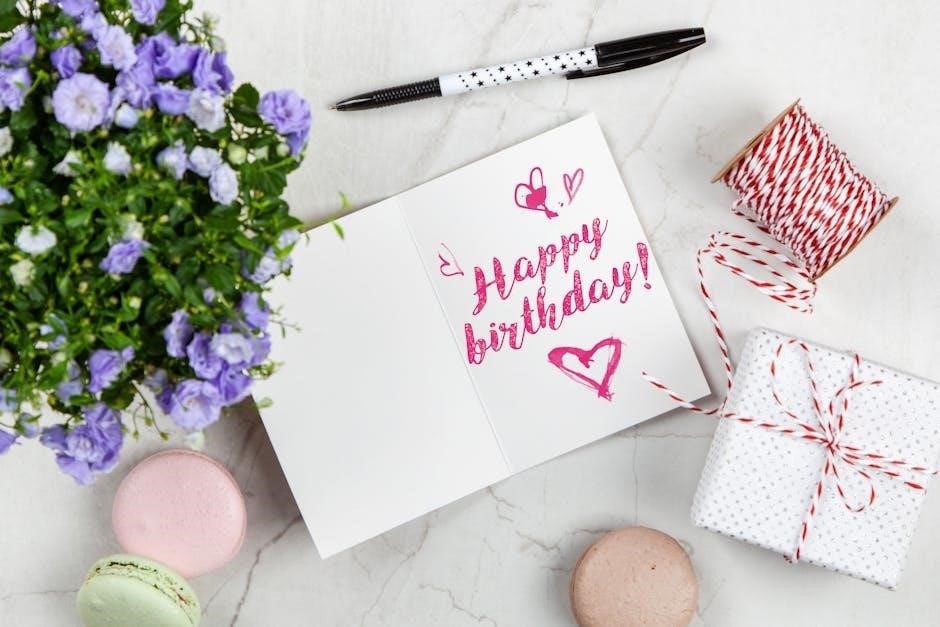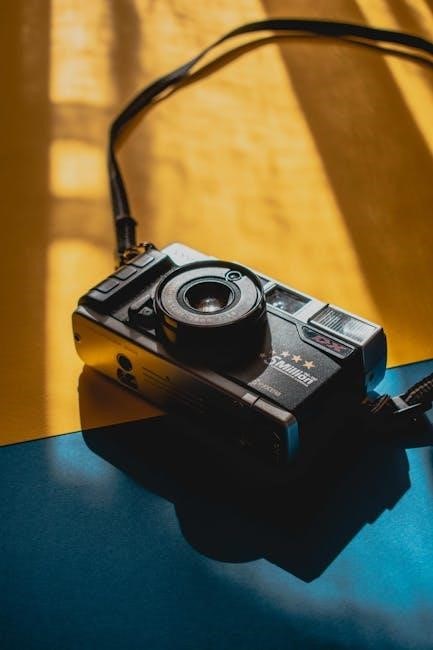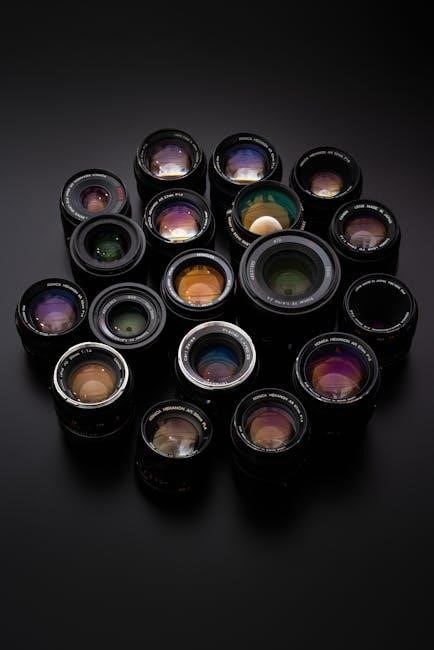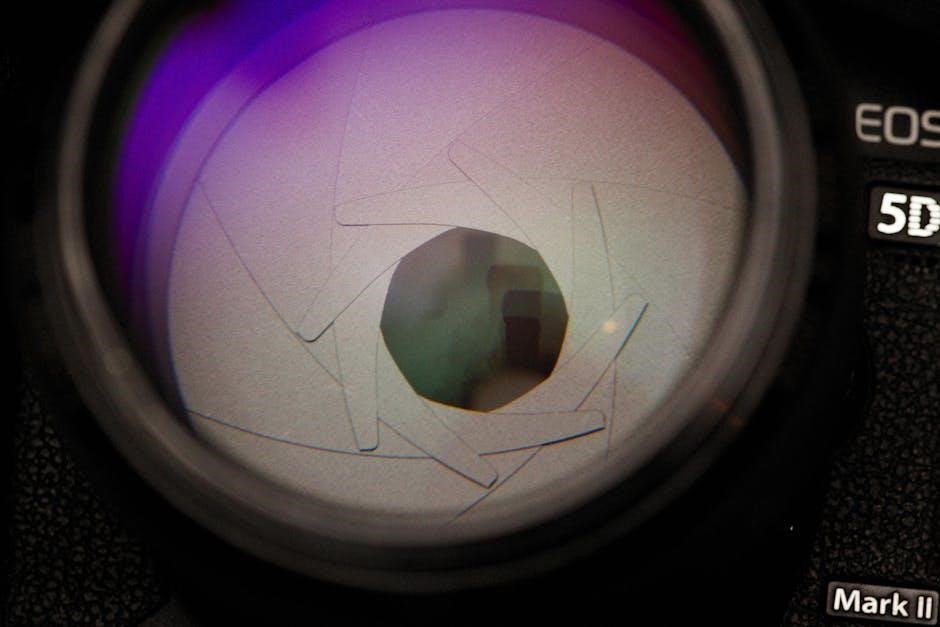The Regents Canal Walk Map PDF is a comprehensive guide for exploring London’s iconic waterway․ It highlights key landmarks, walking routes, and essential information for a seamless journey along the canal․
Overview of Regents Canal
Regents Canal is a vital waterway in London, stretching 8․6 miles from Little Venice to the River Thames․ It passes through vibrant areas like Camden, Islington, and Hackney, offering scenic views and cultural landmarks․ The canal is part of the Grand Union Canal network and features historic locks, bridges, and towpaths․ Known for its rich history, it played a key role in London’s industrial past․ Today, it is a popular destination for walkers, cyclists, and boaters, with attractions like Camden Market, Primrose Hill, and London Zoo nearby․ The canal’s diverse landscape includes urban hubs and peaceful green spaces, making it a unique and captivating route to explore․
Importance of the Regents Canal Walk Map PDF
The Regents Canal Walk Map PDF is an essential tool for navigating the 9-mile route along the canal, from Little Venice to the River Thames․ It provides detailed directions, highlighting key stops and points of interest such as Camden Market, Primrose Hill, and London Zoo․ The map includes sections where the canal is in tunnels, marked in purple, ensuring walkers know alternative routes․ It also offers practical information like step-free paths and boating services, making it accessible for everyone․ Whether you’re a local or a visitor, this guide enhances your exploration of London’s hidden gems, offering a seamless and enjoyable experience along the canal․
Key Features of the Map
The Regents Canal Walk Map PDF boasts several key features that make it an indispensable resource for walkers․ The map clearly marks the walking route in yellow, with alternative paths in purple for sections where the canal is in tunnels․ It includes detailed directions and points of interest such as Regents Park, Camden Market, and Little Venice․ The PDF also provides information on boating services, lock locations, and nearby attractions like Madame Tussauds and the London Central Mosque․ Additionally, it offers guidance on accessibility, with step-free and surfaced paths highlighted, ensuring the route is suitable for all users․ These features make the map a comprehensive and user-friendly guide for exploring the canal․
Points of Interest Along Regents Canal
The Regents Canal offers a diverse array of landmarks, green spaces, and cultural attractions, making it a fascinating route for walkers to explore and enjoy․
Regents Park
Regent’s Park, a 197-hectare green space, is one of London’s most iconic Royal Parks, offering a serene escape from the city’s hustle․ Located near the canal, it features lush gardens, a lake, and plenty of walking trails․ Visitors can explore the park’s diverse wildlife, including rare bird species, or enjoy a picnic on its expansive lawns․ The park also hosts cultural attractions like the London Zoo and the Open Air Theatre, adding to its charm․ For walkers, Regent’s Park serves as a peaceful starting point or a relaxing detour along the Regent’s Canal path, blending nature and urban beauty seamlessly․
London Zoo
London Zoo, officially known as ZSL London Zoo, is a world-renowned attraction located near Regent’s Canal․ As the oldest scientific zoo in the UK, it houses over 600 species of animals, including rare and endangered wildlife․ The zoo’s proximity to the canal makes it a popular stop for walkers, offering a unique blend of nature and wildlife․ Visitors can explore exhibits like the Rainforest Life, Giraffe High Walk, and the famous Penguin Beach․ The zoo also plays a vital role in conservation and education, making it a fascinating destination for families and wildlife enthusiasts․ Its location along the canal adds to the scenic beauty of the walk․
Little Venice, Canal Basin
Little Venice, Canal Basin, marks the western end of Regent’s Canal, where it meets the Grand Union Canal․ This picturesque area is a tranquil starting point for walkers, offering stunning views of the water and surrounding greenery․ The basin is famous for its colorful houseboats and vibrant atmosphere․ Nearby, Rembrandt Gardens provide a peaceful spot for relaxation․ Little Venice is also home to charming cafes and pubs, making it an ideal place to begin or end your canal walk․ Its unique blend of natural beauty and cultural charm makes it a must-visit destination for anyone exploring Regent’s Canal․ The area is steeped in history and offers a serene escape from the city’s hustle․
Camden Market
Camden Market is a vibrant destination along Regent’s Canal, offering a unique shopping and dining experience․ Located near the canal’s towpath, it attracts visitors with its eclectic mix of independent shops, street food stalls, and handmade crafts․ The market is a great spot to take a break during your walk, with options ranging from global cuisine to quirky souvenirs․ Its lively atmosphere and proximity to the canal make it a popular stop for walkers․ Nearby, the Camden Lock Market adds to the area’s charm, with its historic warehouses and bustling energy․ Camden Market is a must-visit for those seeking a blend of culture, food, and shopping during their Regent’s Canal journey․
Primrose Hill
Primrose Hill is a popular spot along Regent’s Canal, offering stunning panoramic views of London․ Located near the canal’s towpath, it is a favorite among walkers and locals alike․ The hill provides a peaceful escape from the city’s hustle, with its open green spaces and scenic vistas․ Historically, it was a site for public gatherings and events, adding to its charm․ Visitors can enjoy picnics or simply relax while taking in the views of the city skyline․ Primrose Hill’s proximity to the canal makes it an ideal stop during the Regent’s Canal walk, combining natural beauty with urban landscapes․ It remains a must-visit for those exploring the area․
Madame Tussauds and the Planetarium
Madame Tussauds, a world-renowned wax museum, is located near Regent’s Canal and offers a unique glimpse into celebrity culture and history․ The nearby Planetarium provides an educational and entertaining experience, focusing on astronomy and space exploration․ Both attractions are easily accessible from the canal towpath, making them popular stops for walkers․ Madame Tussauds features lifelike wax figures of famous individuals, while the Planetarium hosts interactive exhibits and shows․ These landmarks add a cultural and educational dimension to the Regent’s Canal walk, blending history, science, and entertainment seamlessly․ They are must-visit destinations for those interested in exploring beyond the canal’s natural beauty․
London Central Mosque
Located near Regent’s Park, the London Central Mosque is a striking architectural landmark and a significant cultural site along the Regent’s Canal walk․ This mosque, also known as the Regent’s Park Mosque, is one of the largest in the UK, accommodating thousands of worshippers․ Its sleek, modern design contrasts beautifully with the canal’s natural surroundings․ Visitors can admire its minaret and domes while strolling along the towpath․ The mosque serves as a spiritual hub and a symbol of diversity in London․ Walkers can pause here to appreciate its serene ambiance and explore the nearby park, creating a harmonious blend of nature, culture, and faith․

Gloucester Green and Gloucester Slips
Gloucester Green and Gloucester Slips are charming spots along Regent’s Canal, offering a glimpse into the area’s rich history․ Once a bustling hub for barge traffic, Gloucester Green is now a peaceful mooring spot for narrowboats․ The slips, where boats were historically built and repaired, add to the area’s industrial heritage․ Located near Regent’s Park, these sites provide a tranquil escape from the city’s hustle․ Walkers can enjoy the scenic views of the canal and the vibrant community of boaters․ The area also serves as a connection point to nearby attractions, making it a convenient stop during your Regent’s Canal walk․

Downloadable Resources for the Walk
Explore essential tools for planning your Regent’s Canal walk, including detailed PDF maps, customizable route planners, and comprehensive guides with waypoints and nearby services․
Regents Canal Walk Map PDF
The Regent’s Canal Walk Map PDF is a comprehensive guide tailored for walkers, cyclists, and boaters․ It provides detailed routes along the 8․6-mile canal, highlighting key landmarks, towpaths, and lock locations․ The map includes distance markers, nearby attractions, and practical information for planning your journey․ It features starting points like Little Venice and Paddington, with clear directions to popular stops such as Camden Market and Primrose Hill․ Designed for easy navigation, the PDF is portable and accessible on mobile devices․ Regularly updated, it ensures users have the latest information for a seamless experience along the canal․ Download it for a convenient and informative guide to exploring Regent’s Canal․
Ordnance Survey (OS) Map for Printing
The Ordnance Survey (OS) map for printing offers a high-resolution, detailed representation of the Regent’s Canal route․ Designed for walkers and cyclists, it includes precise topography, street views, and key landmarks․ The map highlights the canal’s towpath, locks, and surrounding areas, ensuring accurate navigation․ It is scalable for printing, making it ideal for those who prefer physical copies․ The OS map complements the Regent’s Canal Walk Map PDF by providing additional geographical context and depth․ Users can print sections or the entire map, tailoring it to their needs․ This resource is essential for planning and executing a seamless journey along the canal, offering unparalleled detail for explorers․
Route Instructions and Guide
The Regent’s Canal Walk Map PDF includes detailed route instructions and a comprehensive guide to enhance your walking experience․ It provides step-by-step directions, highlighting key stops, historical sites, and scenic viewpoints along the canal․ The guide offers practical advice on navigation, ensuring walkers can follow the towpath effortlessly․ Clear symbols and markers are used to indicate turning points, landmarks, and facilities․ Additionally, the guide includes tips for preparation, such as footwear, weather, and refreshments․ Designed for both first-time visitors and regular walkers, this resource ensures a seamless and enjoyable journey along Regent’s Canal․ It caters to all users, from casual strollers to avid explorers․
Boating Information and Services
The Regent’s Canal Walk Map PDF provides essential boating information and services for those exploring the waterway․ It details boat hire options, including narrowboats, kayaks, and paddleboards, available at key locations like Little Venice and Camden․ Moorings, boatyards, and maintenance services are highlighted for convenience․ The guide also lists canal-side cafes and pubs offering refreshments for boaters․ Lock operations and opening times are clearly outlined, ensuring smooth navigation․ Additionally, it includes contact details for boat operators, marinas, and emergency services․ This section is a valuable resource for anyone planning a boating trip along Regent’s Canal, enhancing the overall experience with practical and up-to-date information․
Walking Route Details
The Regent’s Canal Walk offers a scenic, well-signposted path with clear markings, ensuring an enjoyable and accessible journey for walkers of all ages and abilities․

Starting Points: Little Venice and Paddington
The Regent’s Canal Walk begins at two key locations: Little Venice and Paddington․ Little Venice, where the canal meets the Paddington Arm, offers a picturesque starting point with colorful boats and serene surroundings․ Paddington Basin, a bustling hub, provides easy access for commuters and visitors alike․ Both areas are well-connected by public transport, making them ideal starting points․ Little Venice is perfect for those seeking a peaceful introduction to the canal, while Paddington offers a more dynamic urban atmosphere․ Walkers can choose either to embark on their journey, ensuring a memorable start to their exploration of Regent’s Canal․ Early starts are recommended to avoid crowds and enjoy the tranquility․
Key Stops Along the Route
The Regent’s Canal Walk features several key stops that highlight its rich history and vibrant culture․ One of the main stops is Camden Market, known for its eclectic shops, street food, and lively atmosphere․ Another notable stop is London Zoo, offering a glimpse into wildlife conservation and education․ Additionally, walkers can pause at Primrose Hill for panoramic views of London, providing a perfect spot for photography․ These stops not only break the journey but also allow walkers to immerse themselves in the diverse offerings along the canal․ Each stop contributes to the unique charm of the Regent’s Canal, making the walk an enriching experience․ Plan your stops to maximize enjoyment and exploration․
End Points: River Thames and Bankside
The Regent’s Canal Walk concludes at two iconic destinations: the River Thames and Bankside․ The River Thames, London’s lifeblood, offers stunning views and a sense of completion for walkers․ Nearby, Bankside is a vibrant area known for its cultural attractions, including Tate Modern and Shakespeare’s Globe․ These endpoints provide a perfect blend of history and modernity․ The Thames Path and South Bank offer further exploration opportunities, with street performers, restaurants, and shops adding to the lively atmosphere․ Completing the walk here allows you to seamlessly connect to other parts of London, making it an ideal ending point for your canal adventure․

Practical Information for Walkers
Comfortable footwear, water, and snacks are essentials․ Check weather forecasts, plan breaks, and stay alert near waterways․ Enjoy the scenic views responsibly and mind other path users․

Accessibility: Step-Free and Surfaced Paths
The Regent’s Canal walk offers excellent accessibility, with step-free access and surfaced paths throughout much of the route․ The towpaths are generally wide and even, making them suitable for wheelchairs, pushchairs, and mobility aids․ Key access points, such as bridges and locks, are designed to accommodate all users․ Seating areas are provided at regular intervals, allowing walkers to rest and enjoy the surroundings; The map highlights accessible sections, ensuring an inclusive experience for everyone․ This makes the Regent’s Canal walk a welcoming option for families, individuals with mobility needs, and those seeking a leisurely stroll․
Cycling Along the Towpath
The Regent’s Canal towpath is a popular route for cyclists, offering a scenic and peaceful alternative to busy city streets․ The surfaced paths are well-maintained, making it suitable for most types of bicycles․ Cyclists can enjoy the mix of urban landscapes and natural beauty, with frequent opportunities to stop and admire the canal’s historic locks and wildlife․ The route connects to larger cycling networks, such as the Grand Union Canal and Lee Valley pathways, extending riding options․ Cyclists are encouraged to share the path courteously with walkers and to be mindful of path surfaces, which can occasionally be uneven․ This makes the towpath a great choice for both leisurely rides and commuting․
Boat Usage and Lock Information
The Regent’s Canal Walk Map PDF provides essential details for boaters, highlighting key locks, mooring areas, and navigation points․ The canal features several historic locks, such as Camden Lock, which are vital for waterway access․ The map indicates lock locations, operating times, and nearby boating services․ It also outlines rules for boat usage, including speed limits and priority for pedestrians․ Boaters can plan their route using the map’s marked mooring zones and nearby facilities․ Additionally, the guide offers safety tips for lock navigation, ensuring a smooth journey along the canal․ This information is invaluable for those exploring the waterway by boat, complementing the walking route details․
Safety Tips and Precautions
When exploring the Regent’s Canal Walk, prioritize your safety by staying alert and aware of your surroundings․ Keep a safe distance from the water’s edge, especially with children or pets, and watch for uneven or slippery paths, particularly after rainfall․ Be mindful of cyclists and other walkers, as the towpath can be busy․ Carry essentials like water, a fully charged phone, and a map․ Familiarize yourself with emergency access points and follow all posted signs․ Inform someone of your route and estimated return time․ Enjoy your journey while staying vigilant to potential hazards․
Nearby Attractions and Connections
Discover vibrant areas like Camden Market, Regent’s Park, and Primrose Hill, all conveniently connected to the canal․ Explore nearby landmarks and enjoy seamless links to London’s iconic spots․
Regents Park and St․ John’s Wood
Regents Park, a stunning Royal Park, offers lush greenery, a zoo, and the iconic Open Air Theatre․ St; John’s Wood, nearby, is known for its historic Abbey Road Studios and leafy residential streets․ Both areas are easily accessible from the canal towpath, providing walkers with a seamless transition between natural beauty and cultural landmarks․ Explore the park’s vibrant atmosphere or stroll through St․ John’s Wood’s charming streets, discovering local cafes and boutiques․ These areas enhance the canal walk experience, offering a blend of relaxation and exploration just steps away from the water․
Connecting Walks to Other London Landmarks
The Regent’s Canal Walk Map PDF also highlights connections to other iconic London landmarks, making it a gateway to exploring the city’s diverse attractions․ Walkers can seamlessly link their canal journey to broader London trails, such as the Thames Path or the Green Link Walk․ The map provides clear pathways to landmarks like the Tower of London, Big Ben, and Hyde Park, ensuring a cohesive and adventurous experience․ Additionally, it connects to vibrant areas such as Camden, Islington, and King’s Cross, offering cultural and historical experiences․ This feature allows walkers to extend their journey, creating a comprehensive and memorable tour of London’s landmarks and hidden gems․
Green Link Walk: Section 3 Details
Section 3 of the Green Link Walk, as detailed in the Regent’s Canal Walk Map PDF, offers a scenic and refreshing route that connects the canal to wider green spaces across London․ This section emphasizes traffic-free paths, ideal for cyclists and walkers alike․ It links Regent’s Canal to Victoria Park, showcasing a mix of urban landscapes and natural beauty․ The route is designed to promote sustainable travel and explores lesser-known green corridors․ Walkers can enjoy spotting wildlife, historic locks, and vibrant street art along the way․ This section is perfect for those seeking a peaceful escape while staying connected to London’s dynamic energy and cultural heritage․
Victoria Park and Traffic-Free Cycling
Victoria Park, a vibrant green space in East London, is seamlessly connected to the Regent’s Canal Walk via traffic-free cycling paths․ This section of the route, as highlighted in the Regent’s Canal Walk Map PDF, provides a safe and enjoyable environment for cyclists and walkers․ The park itself is a hub for outdoor activities, with its broad walkways, lakes, and recreational areas․ Cyclists can explore the park’s perimeter before rejoining the canal towpath, making it an ideal detour for those seeking a mix of urban greenery and waterway scenery․ This traffic-free section is perfect for families and leisurely rides, offering a peaceful escape from the city’s hustle․

Using the Map and Guide
This section provides essential tips for using the Regent’s Canal Walk Map PDF and guide, ensuring a smooth and enjoyable journey along the waterway․ Discover how to navigate the PDF, understand route symbols, and integrate GPS for real-time tracking․ Utilize online resources for up-to-date information and plan your walk effectively with these practical tools designed to enhance your experience․
How to Navigate the PDF Map

Navigating the Regent’s Canal Walk Map PDF is essential for a seamless walking experience․ Start by familiarizing yourself with the map’s layout, which typically includes a legend or key explaining symbols and colors․ Use the zoom feature to enlarge specific sections for better visibility of pathways, landmarks, and points of interest․ Many PDF maps allow users to click on icons for additional information, such as historical notes or nearby facilities․ If available, utilize bookmarks or layers to quickly jump to different sections or filter information based on your needs․ Ensuring your PDF viewer is set to display the map in its intended orientation will also enhance readability․ By mastering these navigation techniques, you can make the most of your Regent’s Canal walk․
Understanding the Route Symbols and Colors

The Regent’s Canal Walk Map PDF uses a variety of symbols and colors to guide walkers effectively․ Symbols such as towpath markers, lock icons, and points of interest indicators help identify key features along the route․ Colors differentiate between walking paths, waterways, and nearby attractions, making the map visually intuitive․ For example, green shading often highlights parks and open spaces, while blue denotes the canal itself․ Red pins may mark important landmarks or facilities․ Understanding these visual cues ensures walkers can easily follow the route and locate amenities․ Familiarizing yourself with the legend or key provided in the map is essential for interpreting these symbols correctly and enhancing your walking experience․
Integrating with GPS and Other Tools
The Regent’s Canal Walk Map PDF can be seamlessly integrated with GPS devices and apps for enhanced navigation․ Tools like Google Maps or specialized hiking apps allow users to import the map as a layer, providing real-time location tracking․ This integration helps walkers stay on course and discover additional points of interest․ GPS devices can also offer elevation data and route sharing options, improving the overall experience․ For tech-savvy walkers, platforms like GPSies or Komoot enable map overlay and route planning․ By combining the PDF map with these tools, walkers can enjoy a more interactive and precise journey along Regent’s Canal․ This fusion of traditional mapping and modern technology ensures a smooth and enjoyable walking experience;
The Regent’s Canal Walk offers a unique glimpse into London’s history and culture․ The PDF map is an essential resource for navigating this scenic route․ For further exploration, additional guides and resources are available online to enhance your walking experience․
Final Thoughts on the Regents Canal Walk
The Regent’s Canal Walk is a captivating journey through London’s industrial heritage and natural beauty․ Using the Regent’s Canal Walk Map PDF, walkers can seamlessly navigate this 8․6-mile route, discovering hidden gems like Little Venice, Camden Market, and historic locks; The towpath offers a serene escape from the city’s hustle, with vibrant street art and wildlife adding charm․ Cyclists and boaters also benefit from the map’s detailed markings․ Whether you’re a local or a visitor, this walk provides a unique perspective on London’s diverse landscapes․ The PDF guide ensures you don’t miss key landmarks or practical tips, making it an indispensable companion for an unforgettable adventure․

Additional Resources for Exploring London Canals
Beyond the Regent’s Canal Walk Map PDF, there are numerous resources to enhance your exploration of London’s waterways․ The Canal & River Trust website offers detailed guides, boating information, and historical insights․ For cyclists, the London Cycle Network map highlights traffic-free routes along the canal․ Apps like Go Paddling provide interactive maps and real-time updates․ Local tourism websites often feature self-guided walking tours and themed itineraries․ Additionally, Transport for London (TfL) offers maps integrating canal paths with public transport options․ These resources ensure a comprehensive and enjoyable experience, whether you’re walking, cycling, or boating along London’s iconic canals․




















